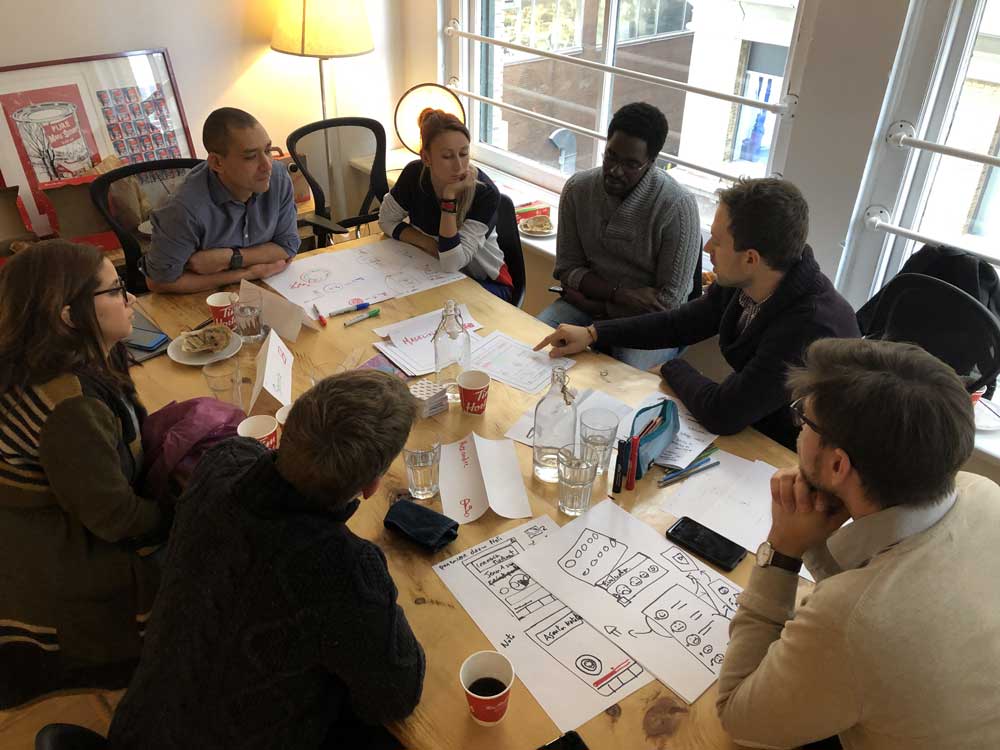How Sidekick Interactive Co-creates Designs With Its Clients to Limit Development Risks

Sidekick Interactive is known for its exceptional ability to ideate and co-create app designs with its clients. By working hand in hand with both the client and researchers, Sidekick can generate ideas that are both feasible and innovative. This process allows for a clear understanding of the project objectives and limitations, which helps to ensure that the final product exceeds expectations and delivers results.
Here are some of the steps to extrapolate our client’s ideas so that they can be built.
1. Understanding the Project Objectives and Limitations
When it comes to designing and developing a mobile app, both the client and researchers need to understand the project objectives and limitations. This will help to ensure that everyone is on the same page and that the final product meets or exceeds expectations. Sidekick Interactive has years of experience working with clients and researchers alike, so we know how to navigate these waters effectively.
2. Brainstorming Solutions and Ideas
Sidekick Interactive recommends brainstorming solutions and ideas with the client and researchers. By exposing clients to the limits of technology, Sidekick Interactive can help to come up with creative and innovative ideas that will set your app apart from the competition.
When it comes to brainstorming solutions and ideas with clients and researchers, Sidekick Interactive recommends using a variety of techniques. Some of our favorites include:
- Brainwriting: This is where a group of people write down their ideas on paper, one at a time. This is a great way to generate a large number of ideas in a short amount of time.
- Brainstorming: This is where a group of people discusses and ideate ideas. This is a great way to come up with creative solutions.
- Mind Mapping: This is where you map out your ideas visually. This is a great way to organize your thoughts and see how different ideas are related.
3. Evaluating Technical Complexity
One of the first steps in selecting the best ideas is to evaluate their technical complexity. Sidekick Interactive takes into account factors such as development time and cost, platform compatibility, and user experience. Do some ideas also pose technical risks, such as: Is this feasible? Are the APIs available? How easy is this idea to develop? We attempt to reduce these risks by having our developers do research, talk with other development teams, and sometimes create very small POCs. This allows us to focus on the most feasible ideas and bring them to fruition. This also helps our clients understand why certain features are complex and others are not.
4. Deciding Which Ideas Make the MVP Cut
Minimum viable product (MVP) is a key concept in software development, and it’s key to attempt to reduce products to their smallest possible footprint to test them and get feedback. Sidekick Interactive works with clients and researchers to decide which ideas make the MVP cut. This allows us to focus on delivering tangible results as quickly as possible.
5. Thinking of the Conceptual User Experience
Even before any design or development work begins, Sidekick Interactive starts thinking about the conceptual user experience. We want to ensure that we are meeting our clients’ and researchers’ expectations from day one. And by doing so, we can avoid costly changes down the road. We do this by thinking about our users and how they will use the app, and what their goals are, and we use many concepts of “design-thinking”. We also love to include real users throughout all of these phases.
6. Designing a Tangible User Experience
Once we have a good understanding of the project objectives and limitations, Sidekick Interactive starts designing a tangible user experience. This includes creating user interfaces and mock-ups, and being as iterative as possible with our clients. We want our designers to have a great feel for what the client is looking for, so that they can proactively start designing all pages of the solutions.
7. Creating a Fully Clickable, High-Fidelity Prototype
8. Getting Feedback From Users
After the prototype is created, Sidekick Interactive gets feedback from users. This helps us to fine-tune the app and make sure that it is user-friendly. We also use this feedback to make changes to the design, if necessary.
9. Conclusion
Sidekick Interactive has a process in place that helps to avoid delivering an app that is not what the client was expecting. The worst possible scenario is a developer not getting feedback until final delivery. At that point, changes are very hard to do and take a long time and cost. Our experience of co-creating projects and getting continual feedback from the client means we can reduce the chances of this happening. We also have a focus on designing a tangible user experience, which helps us get feedback from users early on in the process. This feedback loop ensures that we are constantly refining our designs, and this is the only way to produce high-quality work that meets the client’s expectations.
